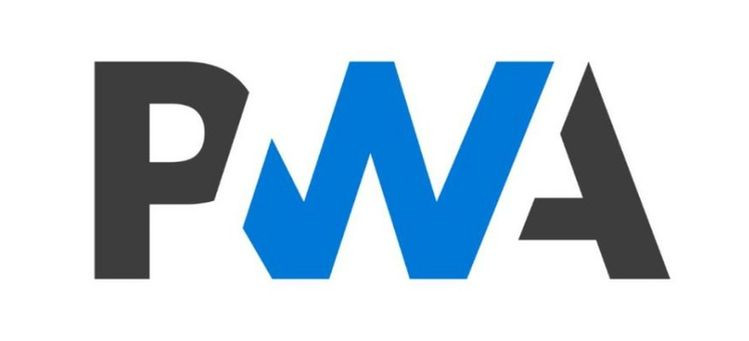PWA or advanced web applications
PWA (Progressive Web Applications) is a web application built using web technologies but interacting with the user as an application. If to look at PWA from a user's point of view, then it is no different from the usual application, but takes less memory and works much faster. But the main thing is that you do not need to use the apps store to access it (PlayMarket, App store, etc.).
Progressive Web Applications is the perfect solution for companies which want to improve their digital communication with the audience and make it more comfortable and faster.
Features of Advanced Web Applications
PWA should have the following characteristics:
- Reliability. A progressive application can be downloaded and opened immediately, regardless of the quality of the network connection. It can also work offline.
- Data is transmitted over the network instantly. UI is smooth and highly responsive to user actions.
- Attractiveness. Such an application is attractive to users, because it is convenient and fast. After experiencing the use of PWA, the user feels a significant difference from the usual mobile app or desktop.
PWA has many common features with a traditional application. It practically does not differ visually and internally as well (all the main resources can be stored on the client side, and the network transmits only those data that change the content).
The browser is used to start the PWA application. Like, for example, android to play the android application.
Originally, PWA technology was positioned as an alternative to mobile applications. However, in our time the desktop version is actively developing also. The latest version of Chrome (v70) supports Desktop Progressive Web Apps, PWA on Linux and Windows platforms.
Advantages and disadvantages of PWA compared to native applications
Progressive web applications are stepping in with the latest technology and have many benefits:
- PWA is an one-time website, as well as a mobile application, and a desktop application. Earlier in developing a universal program that runs on all these platforms, developers used 5 separate applications: for Windows, for MacOS, for Linux, for iOS and for Android. With PWA it is enough to create one application. Therefore, the creation of PWA from the point of view of development - is more easy and quick than a regular site.
- These apps should not be searched and downloaded at the store. Browser developers offer users to install PWA after re-visiting the site. Customer should accept the installation of a progressive web application and it will instantly appear on the device of the user.
- You do not need to use APIs that support backward compatibility. PWA users launch this version of the code (as opposed to classic applications).
- Compactness. PWA does not require much memory in the phone.
- All functions of visual mobile applications (GPS, Push-messages, etc.) are available for PWA.
- Security. Users get access to each function after their individual request.
Disadvantages of PWA:
- The only store for installing such applications does not exist yet. To install PWA, you must log in to your site and agree with the offer to install its PWA version.
- MacOS and iOS are questionable. Since the spring of 2018, PWA supports virtually all browsers, Chrome and Opera initially support advanced web applications, Firefox and Microsoft have taken on the responsibility to support. But not Apple. Although Safari supports advanced applications, but "minimal" - for example, iOS does not support push messages in PWA.
- Limited performance. Performance of PWA is lower than in native applications.
- Isolated architecture. Additional means of data exchange between different PWAs are related to the peculiarities of their architecture.
Like every app, PWA has its advantages and disadvantages. Comparing the pros and cons of progressive applications, one can conclude that they are an effective solution for different systems, and also have excellent functionality and maximum versatility.
BENEFITS PWA FOR BUSINESS
The boom of traditional applications has passed, and the percentage of those who uninstall apps continues to grow. Most smartphone users download zero applications per month, and only a third of smartphone owners download from one to three.
Progressive web applications can fix this situation. Why? Let's find out:
- Users can switch to PWA from social networking links, while browsing the web or directly from search engines. This is convenient because PWA does not compete for download with two million available apps on the iOS AppStore or Google PlayMarket.
- A proposal to install PWA appears only for interested users. The system offers an application only to users who meet certain criteria and visit the site repeatedly.
- Add-ons are installed instantly. Those components that require a long boot already have been installed in the cache when the user first visits the site.
- PWAs have a small amount and effectively use browser capabilities.
- Push messages, offline work and all other PWA functions will work even if the visitor does not install it.
- The site owner does not need to download the app in the platform store and pay the AppStore or PlayMarket a percentage of sales.
- PWA has a positive impact on increasing site conversions and attracting more and more users.
Google has published case studies of companies that have already been featured in advanced applications:
- AliExpress has increased the conversion rate for new users by 104%.
- United eXtra Electronics showed a four-fold increase in the number of visitors and 100% increased sales from users that appear as a result of interaction with push messages.
- 5miles reduced the bounce rate by 50% and increased the conversion by 30%.
- Konga uses 92% less data for the initial boot than downloading them from the native application.

